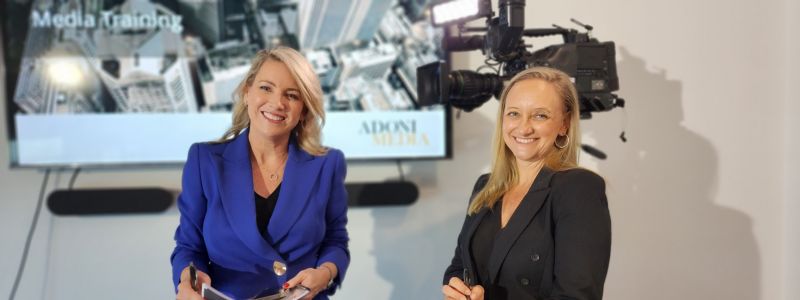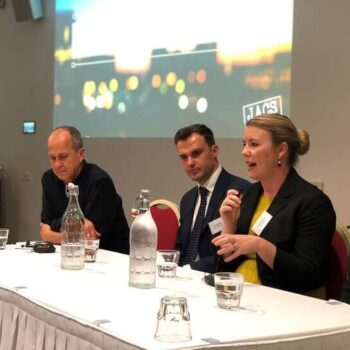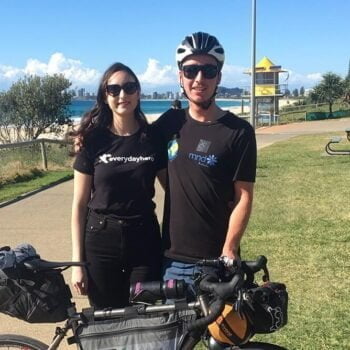Media training techniques and tips
Media training techniques 101. Understanding how the media works can be difficult, but by doing media training exercises and learning the fundamentals of journalism, you can learn how best to use news to your advantage.

What makes the news?
Have you ever wondered why a story was featured in the news or even how the media decides what stories are in fact considered “newsworthy”? A good news story is something that is interesting or important to the audience. A great story however, can do both. Journalists tend to follow these six fundamentals to filter out what stories make the news:
Conflict:
Controversy! The media and audience love a fight or a scandal where people and/ or organisations are pitted against each other.
New:
New acquisitions, a new service, new statistics, new technology – anything new or “breaking” is instant news.
Significance:
How big is the issue? How many people are impacted? The more people affected, the bigger the story.
Prominence:
The larger your profile or the larger the corporation, the more newsworthy you are. If you’re prominent, then even small events are significant.
Proximity:
Local is the key word. News editors are very parochial, so news that happens close to home, rates.
Human Interest:
This story is one with a human angle that evokes emotion, which can be either good or bad. These types of stories don’t date as quickly.
Competition is also key. If there are number of newsworthy stories on a particular day, chances are some stories will be dropped permanently (if they are time-sensitive) or until a new slot becomes available.
When a journalist or an editor decides to run a story, they will see how well it fits the above criteria. A good story will usually fall under at least two of these news values – but it’s important you find the right angle to make sure you’re noticed by the media.
How to get the right story
A good media story doesn’t necessarily talk about a company’s growth or the benefits of its products and services. A news story has to be more than a sales pitch in order to pique the interest of a journalist, and their viewers.
Good public relations is about asking the right questions to learn what is different about your business to find the right hook or angle to get publicity. Was your business established in a unique way? Who are the people behind the brand? Are you utilising new technology? Have you achieved success in an unusual way?
For businesses launching a new product or services the ability to identify an interesting news angle is essential if they are going to make the headlines.
An example: Adoni Media recently helped launch Brixn – a free app which offers a step-by-step guide to buying property. The media pitch focused on the people behind the business. A husband and wife duo who sold their own home to fund the development of the app, to help others purchase property. Thanks to that unique story they achieved State-wide television coverage which resulted in the app being downloaded more than 550 times in just one week.
For us, getting to know a client’s story is one of the most important first steps in both branding and media strategy. You really do need to think about your story from the audience perspective. Find your story and tell it effectively and publicity will follow soon after.
After you have found your story and know which medium is right for you story, the next step is to pitch it to journalists. An effective way to do this is by creating a media release (also known as a press release).
Writing and sending a media release is one the most effective ways to pitch your story to a newsroom. A release can be an inexpensive and beneficial tool to publicise events or important information and to put you or your company’s views forward. Media releases can be used to tell any story.
With the 24-hour news cycle constantly turning and the ongoing demands of social media, it can be difficult to catch a journalist’s attention. So, the main rule is that all media releases must be newsworthy. If a release isn’t newsworthy, you’ll be seen as wasting a journalist’s time and it’ll end up in the bin.
Here are some tips to get your media release noticed by the media:
Have a catchy headline
It’s said nearly 80 per cent of readers never actually make it past the headline, so it’s important to engage the reader from the get go.
Create a strong headline that sums up your release or highlights the most important point.
The lead paragraph should make the journalist continue reading
The lead paragraph is where you introduce the reader to the who, what, when, where, why and how of your story.
It should provide a ‘hook’ and engage the journalist to continue reading.
Keep the lead paragraph short – if it’s too long the journalist will lose interest.
Make sure your media release is accurate, credible and supported by facts
Media releases are credible sources of information – they’re not an avenue for advertising and shouldn’t contain falsehoods.
Any statement you make in a media release needs to be backed up, so using hard facts and numbers can be beneficial.
Quotes should be included. Quotes add a human element to your media release, while also adding information. It also gives a journalist an idea of who they’ll be able to interview if they take up the story.
Grammar and structure of a media release is key
Grammar in a media release needs to be perfect. Always check your work and ideally have more than one person look over the release before it’s sent.
A media release should be one page in length – so your writing needs to get straight to the point to better engage the journalist.
Provide contact information
If your media release does get picked up by the media, journalists may want to follow up any questions with you and/or organise an interview with a spokesperson.
Include contact information at the bottom of the media release – a name, email and phone number.
Feel free to also provide relevant links to more information, so journalists can do more digging if they need.
How can I get my story published on different mediums?
How the story is told is often just as important than the topic covered, so if the media does pick up your story, it may be presented in different ways to different audiences.
Deciding how your story can be presented in video or print can affect the way you pitch to different media (is there anything to film? If the answer’s no, don’t pitch to TV!). Providing the right elements to journalists working in different areas will heighten your chances of having the media pick up your story.
Print:
With print, it is mostly about what you say in your interview that makes the story newsworthy. Printed news interviews often take place on the phone so it’s important you give yourself time to prepare and have your notes in front of you. Print media stories sometimes offer an opportunity for you to supply a picture (or a journalist may come out to take one). If you do supply a photo, make sure it’s relevant and reflects the who, what, where, how and why of the story.
Television:
Television is very different to print, as it is all about the image. To make your story newsworthy for television media, interesting footage, and a filmed interview is needed. So, prepare ahead of time for what you want the cameras to film and what you want to say. Sometimes, journalists might ask you to supply vision for their story, so try and gather some before meeting with the journalist. This can also be done in the form of a Video News Release (VNR).
Radio:
Stories for radio are all about what you say and how you say it. Stick to relevant themes, as it can be easy to run away with your words. So again, prepare what you are wanting to say and make sure your voice is lively so it interesting to listen to but try to stick to your normal voice level.
Online:
Journalists writing a story on digital or online platforms will often need a picture or video to go along with the interview. Like print, these can be supplied by you or your organisation. Again, make sure what you do supply is relevant to your story and highlights what you want to portray.


